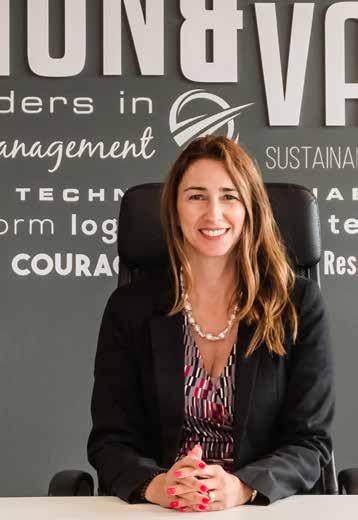
1 minute read
Sustainability
from EV Cargo EVOLVE 2023
by ev_cargo
Sustainability refers to the practice of a company operating in a way that is economically, socially, and environmentally responsible. Sustainability is our future, it protects our people, environment and society. The development of sustainable strategies is essential for our business to grow, whist protecting our ecological environment and future generations.
Virginia Alzina, Ph.D CHIEF SUSTAINABILITY OFFICER
Advertisement

2022 was a dynamic and demanding year for us. We launched our inaugural Sustainability Report, aligning it with the top four most recognized international frameworks and achieving external verification for the entire report, including our carbon footprint.
We achieved a substantial reduction of 29% in our CO2 emissions across all scopes in 2022. The progress we made within a year is truly remarkable. We devised a Decarbonisation Roadmap that received unanimous approval from senior management, committing to achieve carbon neutrality in Scope 1 and 2 emissions by 2030 and we have incorporated significant sustainability metrics into our performance review process, linking them directly to managerial bonuses.
In 2022, we submitted our 2021 baseline data to the Science Based Targets initiative, a joint venture between CDP, the United Nations Global Compact, the World Resources Institute, and the World Wide Fund for Nature. The initiative’s objective is to help companies set ambitious, scientifically grounded greenhouse gas emission reduction targets.
A significant milestone was our presentation on Decarbonization Actions at COP27 in Egypt. There, we forged new alliances and learned about emerging technology within the global logistics sector. This marks a significant stride towards our goal of having 30% of our vehicles with zero emissions by 2030 and 100% by 2040. We remain committed to the United Nations Sustainable Development Goals.
As of now, women hold 31% of senior management positions and make up 29% of government bodies within our organization.









